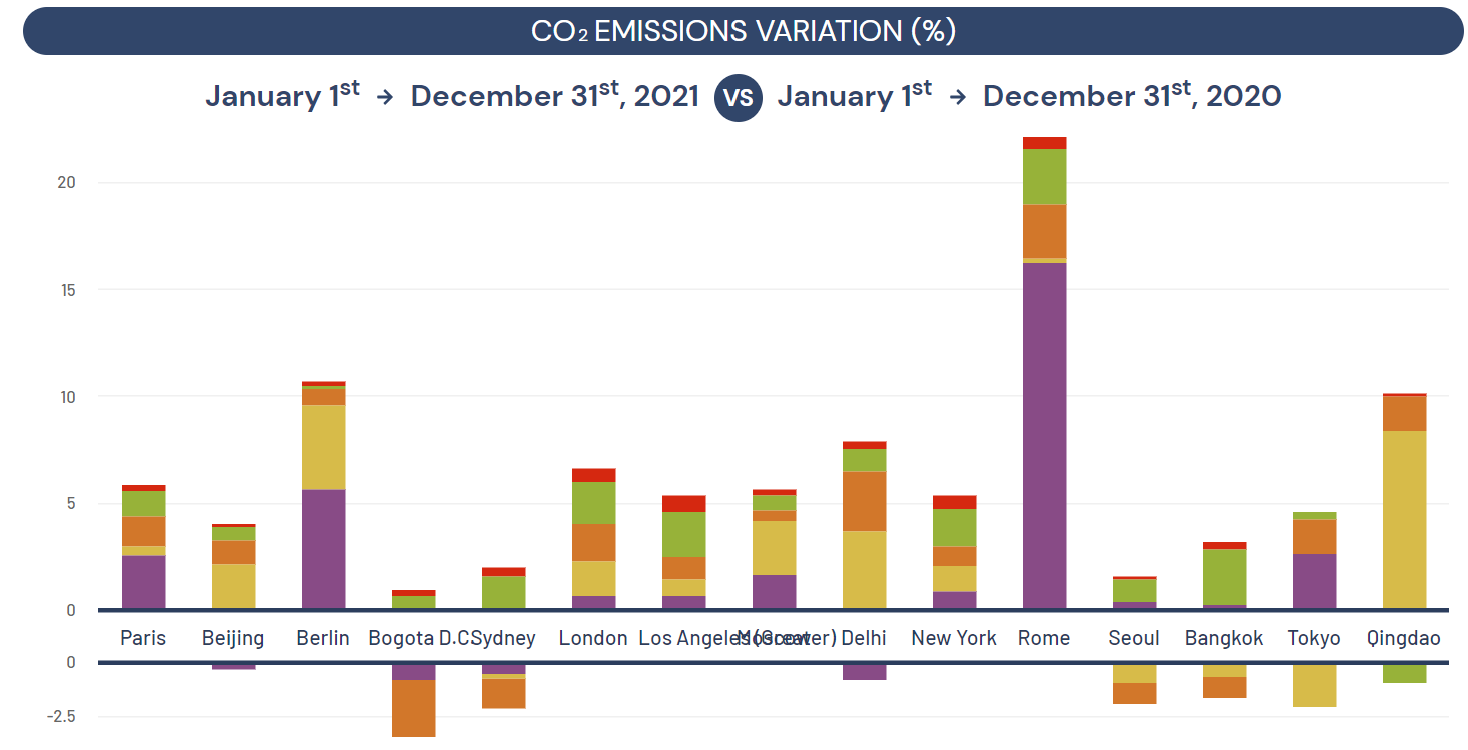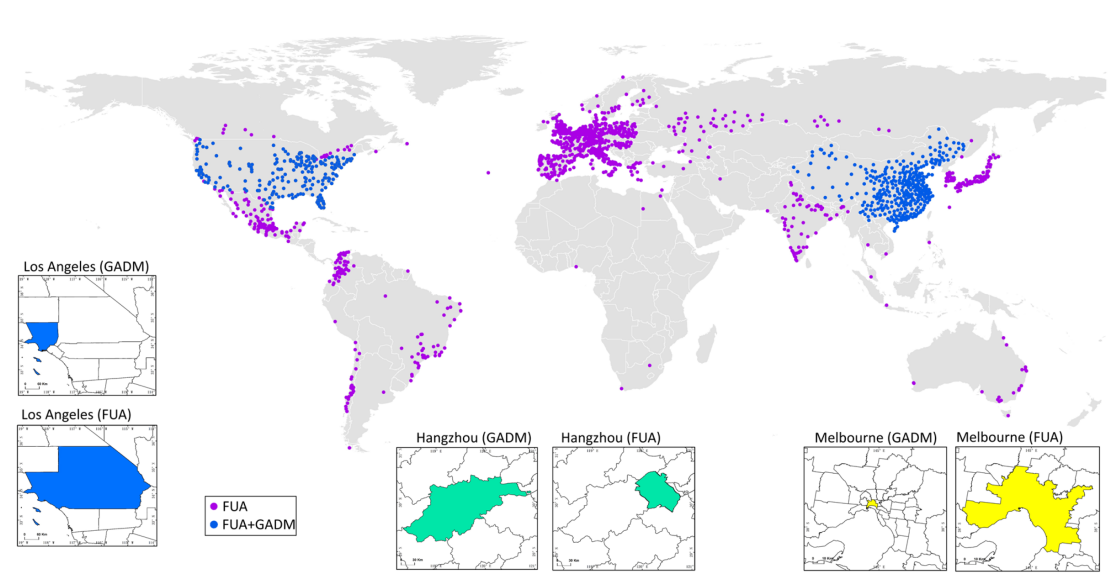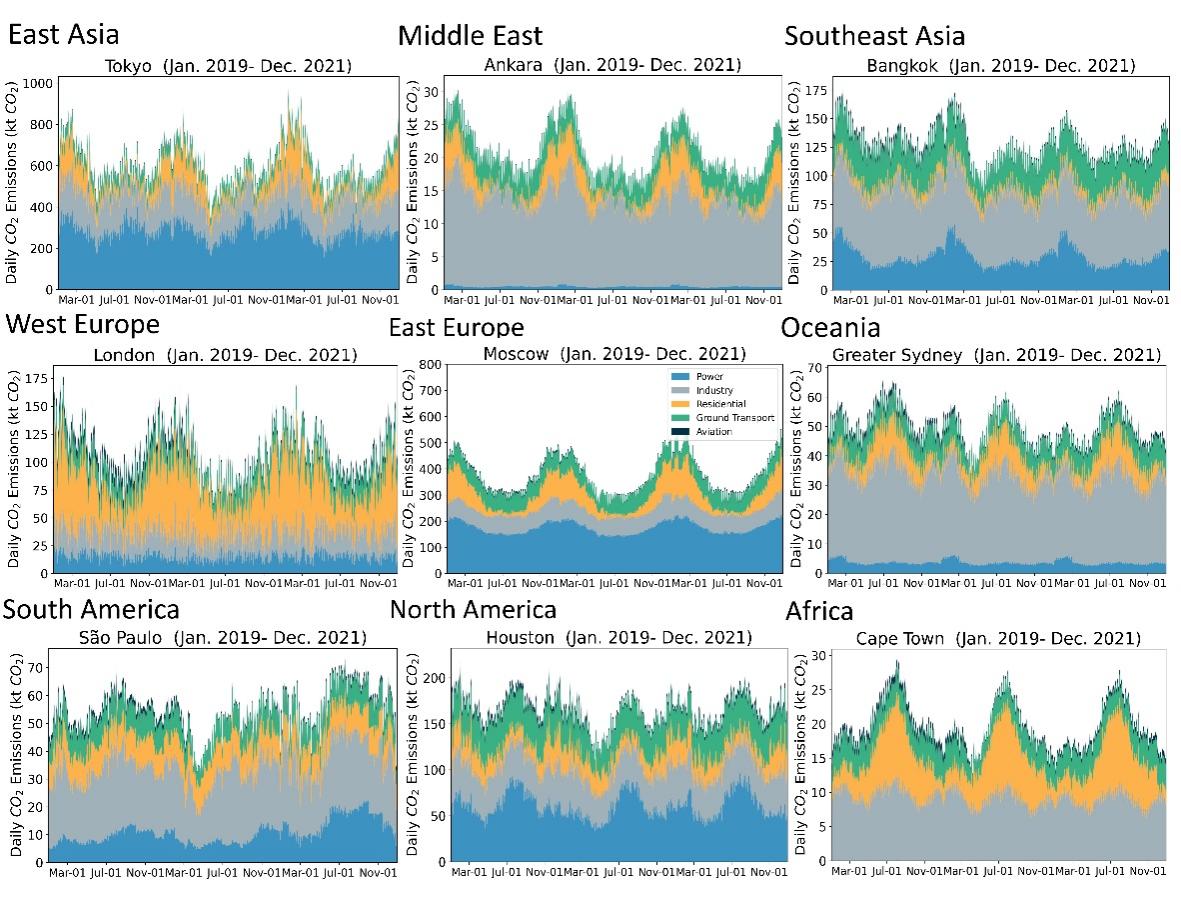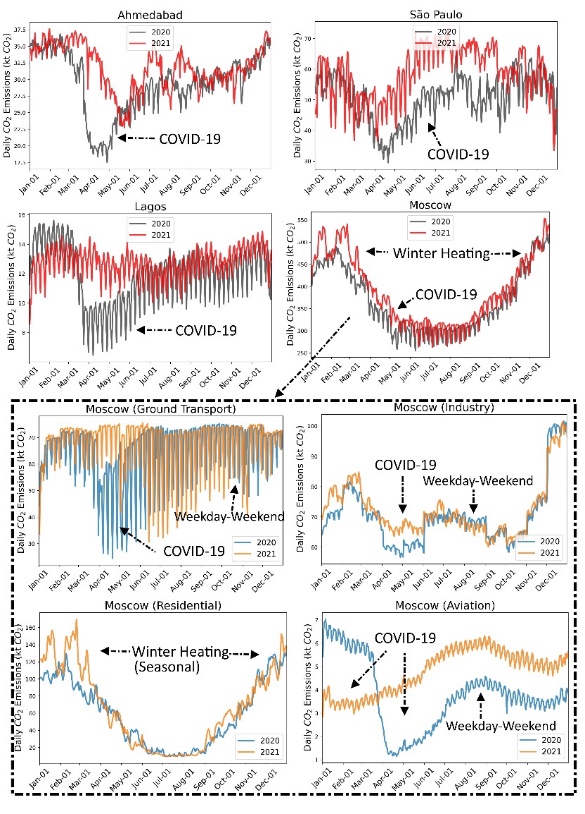
More than 60% of global fossil-fuel CO2 emissions are produced in cities. Greenhouse gas emission reduction in cities is a key to realizing the goal of “carbon neutrality”. Timely and detailed city-level emissions inventories can provide support for the formulation of efficient emission reduction policies. Unfortunately, due to the difficulty in accessing city-level energy consumption statistics, most carbon emissions inventories are made at the national level, hardly focusing on the city level. Furthermore, many carbon emission inventories often lag reality by one year or more, limiting the formulation of city-level emission reduction policies.
Recently, Associate Professor Liu Zhu’s team from the Department of Earth System Science (DESS) of Tsinghua University, in collaboration with researchers from many countries, based on statistics, remote sensing, observation and other multi-source data, have built near-real-time daily carbon emission data of cities worldwide, and quantitatively evaluated the daily carbon emission changes of multiple sectors including power, industry, transportation, residents etc. in major cities around the world. The research results have been published in Scientific Data as an article titled “Carbon Monitor Cities: near-real-time daily estimates of CO2 emissions from 1500 cities worldwide”.
The daily emissions are disaggregated based on two types of city areas: Global Administrative Areas (GADM) and Functional Urban Areas (FUA). In the light of the local data of cities, such as daily temperature, flight take-off and landing, traffic flow and other data, the city-level emissions are corrected by sector to address the deviation caused by spatial downscaling. Finally, the results are compared with other published data sets (CEADs, MEIC, Vulcan and CDP, etc.) and uncertainty analysis is conducted.
Near-real-time daily urban carbon emission data covers 1,500 major cities in 46 countries (Fig. 1). The method will be updated regularly and optimized constantly, and the accuracy of urban data will be improved with reference to the observation data from ground base stations. The results can provide data support for the study of carbon emissions in various cities, as well as the relationship and change pattern of urban development.

Fig. 1 City distribution map included in Carbon Monitor Cities and comparison between the administrative city area versus the functional urban areas for cities in different regions

Fig. 2 Daily by sector near-real-time CO2 emissions for cities (FUA) in different regions of the world based on the Carbon Monitor Cities database.

Fig. 3 Impact of emergencies such as COVID-19 on different cities as reflected by Carbon Monitor Cities
Huo Da, a postdoctoral fellow and Shuimu Scholar of the DESS, Tsinghua University, is the first author of the article, and Associate Professor Liu Zhu of the DESS, Tsinghua University is the corresponding author of the article. The collaborators include many researchers from China, the United Kingdom, the United States, France and other countries. This research is supported by the National Natural Science Foundation of China, Qiushi Foundation and other projects. The relevant research data have been published on the website of Carbon Monitor Cities (https://cities.carbonmonitor.org/).
Full-text link:
https://www.nature.com/articles/s41597-022-01657-z
Related papers:
1.Huo, D., Huang, X., Dou, X. et. al., & Liu, Z., Carbon Monitor Cities near-real-time daily estimates of CO2 emissions from 1500 cities worldwide. Sci Data 9, 533 (2022). https://doi.org/10.1038/s41597-022-01657-z
2.Liu, Z., Ciais, P., Deng, Z. et al. Carbon Monitor, a near-real-time daily dataset of global CO2 emission from fossil fuel and cement production. Sci Data 7, 392 (2020). https://doi.org/10.1038/s41597-020-00708-7
3.Dou, X. et al. Near-real-time global gridded daily co2 emissions. The Innovation 3, 100182, (2022). https://doi.org/10.1016/j.xinn.2021.100182
4.Liu, Z. Near-real-time methodology for assessing global carbon emissions. Chinese Science Bulletin, (2022) https://doi.org/10.1360/TB-2022-0494
Related databases:
Carbon Monitor Cities:https://cities.carbonmonitor.org/
Carbon Monitor:https://carbonmonitor.org/
CEADs: https://www.ceads.net.cn/
MEIC: http://meicmodel.org/